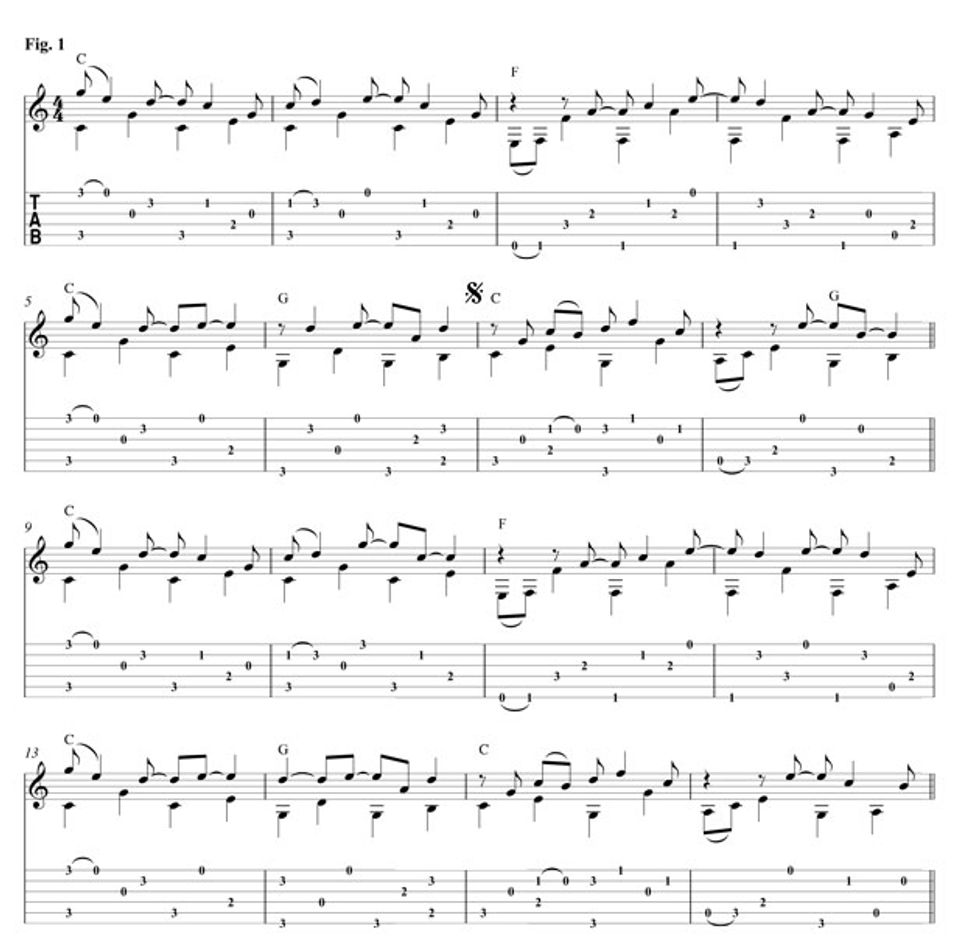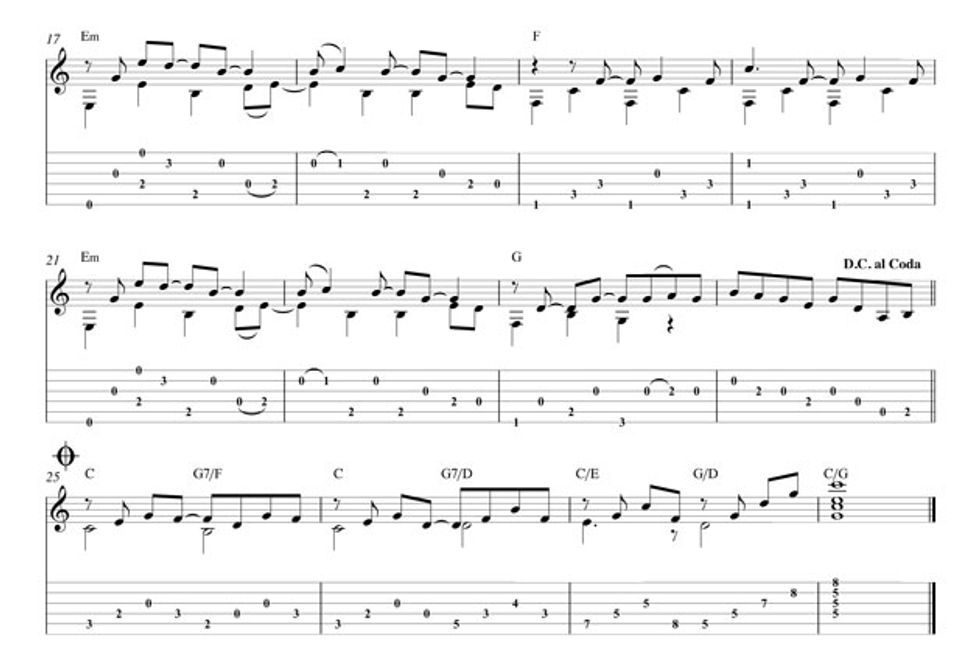Chops: Intermediate
Theory: Intermediate
Lesson Overview:
• Develop a rhythmically strong fingerstyle technique.
• Explore the essential elements of Leo Kottke’s style.
• Balance melodic phrases with a steady bass line.
Click here to download a printable PDF of this lesson's notation.
In this lesson we pay tribute to the inimitable Leo Kottke by exploring his sound and powerful right-hand technique. It’s important to note that Kottke’s style has continued to evolve over the years, and what might have been “signature Kottke” in the ’70s is not the same as the ’80s, ’90s, or 2000s. While preparing this étude I spent a lot of time revisiting early Kottke compositions, including “The Fisherman,” “Eggtooth,” and “Stealing.” I also spent time dissecting his arrangements of music written by others, such as Pete Seeger’s “Living in the Country,” “Eight Miles High” by The Byrds, and the hymn “In Christ There is No East or West.”
While this étude demonstrates several features of both his left- and right-hand techniques, I focused much of my attention on what Kottke himself considers one of his chief attributes, “developing an invisible home for my thumb.”
One of the most obvious features that set Kottke apart from so many other fingerstyle guitarists is his long-form, right-hand pattern. He’ll frequently play eight or more measures of music before repeating any right-hand idea. His patterns are similar from measure to measure, but rarely repeat exactly.
I’ve done the same thing here. Measures one, two, and five are similar—in fact the bass notes (played by the thumb) are exact, but the melody notes are varied and switch strings.
The walk into the F chord in measure three is a common “Kottke-ism” that leaves the leading tone (E) on the downbeat and the root on the and of beat 1. Very cool! He does this in “The Fisherman,” “Stealing,” and several other songs. Measure eight contains a variation on this idea with the A note leading into a C chord.
Measures five and six are noteworthy for the fact that no note is attacked on the and of beat 4. This is another familiar Kottke trait, where he gives the previous melody note room to breathe without cluttering the piece with extraneous inner harmony. As I mentioned, Kottke’s plucking patterns are usually very similar from one section to another. In the second eight measures he explores variations of the first eight while seamlessly, yet unexpectedly, leading us into Em.
Interestingly, the bass completely avoids the downbeat in measure 17 and the melody propels everything forward. Two repetitive, static bass notes immediately follow this. The next two measures deliver a brief respite from the previous melodic movement by lingering on an Fmaj9, emphasizing the low notes.
The single-note run in measure 24 isn’t an uncommon Kottke trait, but when such a line appears it’s usually for a brief one-measure run or designed to segue into a different section of the song. And that’s what’s happening here: The run takes us back to the beginning of the piece.
Finally, the coda is classic Kottke (though admittedly simplified for our purposes). Kottke is fond of ending many a tune by ascending the fretboard with a variety of chord inversions, concluding on the I, voiced with the root on top.
One aspect that really sets Kottke’s playing apart from so many other fingerstyle guitarists is his powerfully rhythmic right hand and how he uses it to compose such accented, syncopated, and—ironically—non-guitaristic music.
This étude represents only a very small percentage of Kottke’s signature licks. I highly recommend listening to a broad range of his recordings. This list includes the essential powerhouse 6- and 12- String Guitar (1969), the highly polished Great Big Boy (1991), and especially the two classic live recordings done more than 20 years apart: 1973’s My Feet are Smiling and 1995’s Live. Be sure to pick your jaw up off to floor when you’re done.












![Rig Rundown: Russian Circles’ Mike Sullivan [2025]](https://www.premierguitar.com/media-library/youtube.jpg?id=62303631&width=1245&height=700&quality=70&coordinates=0%2C0%2C0%2C0)









